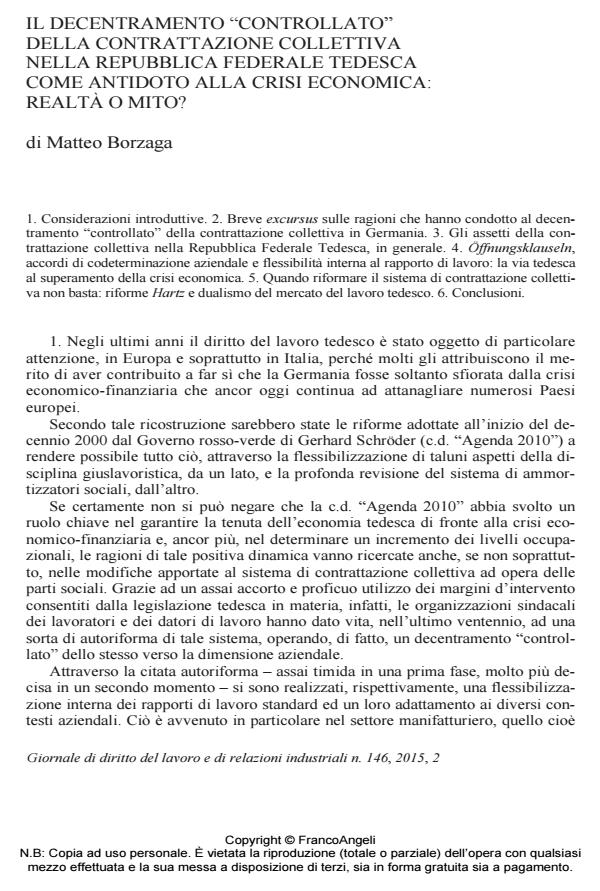Il decentramento "controllato" della contrattazione collettiva nella repubblica federale tedesca come antidoto alla crisi economica: realtà o mito?
Titolo Rivista GIORNALE DI DIRITTO DEL LAVORO E DI RELAZIONI INDUSTRIALI
Autori/Curatori Matteo Borzaga
Anno di pubblicazione 2015 Fascicolo 2015/146
Lingua Italiano Numero pagine 19 P. 275-293 Dimensione file 92 KB
DOI 10.3280/GDL2015-146004
Il DOI è il codice a barre della proprietà intellettuale: per saperne di più
clicca qui
Qui sotto puoi vedere in anteprima la prima pagina di questo articolo.
Se questo articolo ti interessa, lo puoi acquistare (e scaricare in formato pdf) seguendo le facili indicazioni per acquistare il download credit. Acquista Download Credits per scaricare questo Articolo in formato PDF

FrancoAngeli è membro della Publishers International Linking Association, Inc (PILA)associazione indipendente e non profit per facilitare (attraverso i servizi tecnologici implementati da CrossRef.org) l’accesso degli studiosi ai contenuti digitali nelle pubblicazioni professionali e scientifiche
The main purpose for the article is to analyse the slow emergence of dismissal during Italian liberal age (1865-1914). First of all, the Author aims to demonstrate how modern legal categories have been advocated by the intuitions of ordinary courts already in the second half of 19th Century. A role, however, disavowed by historiography of labour law. According to the Author, while the reactionary Civil Code of 1865 was in force, doctrine didn’t make way, not providing relevant inputs to the construction of dismissal legal category. Civil courts, instead, went on to deal increasingly with labour issues, taking several steps toward a modern system, before Probiviri’s development in labour law system and the 20th century reforms, such as a notice period of termination and remedies against wrongful termination of contract.
Parole chiave:Dismissal; Liberal age (1865-1914); Civil Code of 1865; Doctrine; Case law; Probiviri.
- Quale futuro per la contrattazione collettiva? Gian Primo Cella, in GIORNALE DI DIRITTO DEL LAVORO E DI RELAZIONI INDUSTRIALI 150/2016 pp.217
DOI: 10.3280/GDL2016-150001
Matteo Borzaga, Il decentramento "controllato" della contrattazione collettiva nella repubblica federale tedesca come antidoto alla crisi economica: realtà o mito? in "GIORNALE DI DIRITTO DEL LAVORO E DI RELAZIONI INDUSTRIALI " 146/2015, pp 275-293, DOI: 10.3280/GDL2015-146004